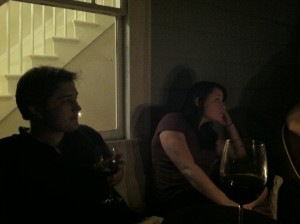Surprisingly, people used to sleep differently than we do today. Here’s a link to an article recently published at the BBC. https://www.bbc.co.uk/news/magazine-16964783. The short of it goes that before the advent of artificial lighting, people would go to sleep a couple of hours after the sun went down. They would then wake up in the middle of the night, staying awake for a couple to three hours. They would then fall back asleep for another few hours or so. This is known as bi-modal or segmented sleep. Scientific research has shown that this mode of sleep is natural to all mammals, and that includes us humans.
I have begun to sleep in this manner, and have noticed a considerable change (for the better) in my overall well-being. The catch is that you have to go to sleep early and avoid artificial lighting after the sun goes down, because it particularly interferes with the kicking-in of your natural circadian sleep rhythm. I use oil lamps at night to read by, and have found that the period “in between sleep” is especially good for prayer and study.
I won’t go on, but I encourage you to do a bit of research on the subject. I think it’s a potential game-changer for anyone.


 This review gives valuable insights into the poetic mode of education–and more particularly how it was envisioned at the University of Kansas in the Pearson Integrated Humanities Program (IHP) under the brilliant tutelage of Dr. John Senior, Dr. Dennis Quinn, and Dr. Frank Nellick. It helped me to understand what is at stake in fostering this type of education in our children and our teachers especially. The article will introduce you to Gradgrind, a Dickens character from Hard Times who believes in Facts and nothing else.
This review gives valuable insights into the poetic mode of education–and more particularly how it was envisioned at the University of Kansas in the Pearson Integrated Humanities Program (IHP) under the brilliant tutelage of Dr. John Senior, Dr. Dennis Quinn, and Dr. Frank Nellick. It helped me to understand what is at stake in fostering this type of education in our children and our teachers especially. The article will introduce you to Gradgrind, a Dickens character from Hard Times who believes in Facts and nothing else.